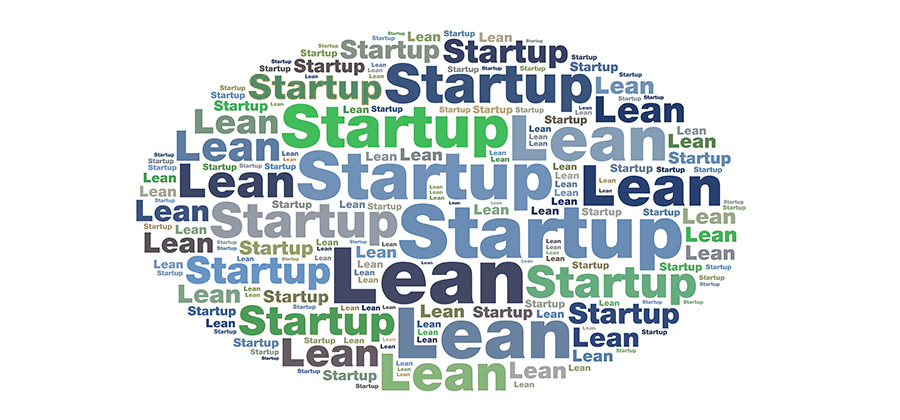We conclude with some provocative quotes by business angel Cedric Donck. Food for thought...

"Disruptive innovation should keep all established companies awake at night. And they need to step out of their comfort zone. People are finally starting to realise this now. French telecom group Orange has joined forces with an insurance group to set up a mobile-only bank. And media company Medialaan recently acquired mobile operator Mobile Vikings. Who would have predicted this three years ago?"
"Everyone is always talking about Amazon or Zalando, but some conventional companies have been engaging in disruptive innovation for decades. IBM sold mainframe computers in the 1970s and personal computers in the '80s and '90s. After that they moved to consulting. In the next four years they will be investing one billion euros in the artificial intelligence of their supercomputer Watson. IBM is sometimes considered a dinosaur, but that's not the case: it's a company that reinvents itself every ten years."
"Some start-ups focus only on increasing their market share without making a profit. That is like playing the lottery. There really is a different way. An internet company such as Immoweb grew steadily in a healthy way without too much fuss in the press. A couple of years ago, German media group Axel Springer, publisher of Bild and Die Welt, paid 130 million euros for a majority stake. Congratulations, is what I say to that. Unfortunately, many journalists only praise start-ups that are raising millions, even if they have no decent business case to show for it. In my opinion, raising money is gaining permission to operate at a loss. Spending someone else's money is hardly something to be proud of. Swedish scientists have recently analysed how start-ups established in 2008 were doing in 2013. The conclusion was that the more capital they had, the less they had achieved five years later. If you have too much money, you start to believe your own story and your own fantasies. If you have little money, you need to listen to your customers very carefully, and that is the best way to achieve success."
"Belgium is not doing badly. Big players such as BNP Paribas Fortis are launching internal initiatives, with Home for Innovation one example. Rather than business angels like me, they have more leverage to support their start-ups. The government is also starting to do what it needs to do. The tax shelter for start-ups is a tax scheme to encourage young entrepreneurship. Investors in Belgian start-ups will receive personal income tax benefits. When things are done right, this certainly deserves a mention."
18.07.2016
Disruptive innovation: J.S. Bach versus The Rolling Stones
Established companies engage in incremental innovation; start-ups engage in disruptive innovation. It is a fight between David and Goliath, and we all know how that turned out.
Imagine a lush meadow under the spring sunshine. Two professional musicians in smart suits are playing Sonata for flute and harpsichord by Johann Sebastian Bach. Suddenly those sweet sounds are ripped to shreds by an electric guitar. It is the well-known riff from Start Me Up, the hit song by The Rolling Stones. When the bass and drums also join in, the classical music perishes in an orgy of electrically amplified instruments. Keith Richards' furrowed face is lit by a wicked grin.
The fantastic music by J.S. Bach symbolises the established companies here. Their approach is well-considered; their products are polished. They have built a longstanding relationship of trust with their customers. Everyone thinks that they can continue like this for a very long time to come. Is The Rolling Stones' music as great as Bach's? That is certainly up for discussion. In any case their music is different. Rough, less polished, aiming for a direct impact. And certainly not less commercial. The rock songs by Jagger and Richards symbolise the young start-ups here. They disrupt the peace of the established companies and sometimes even bring the biggest players down.
Playing by different rules
The Rolling Stones were innovative. They revamped the old blues, consciously cultivated their bad boy image and made good use of the mass media to put themselves out there in the market. They were disruptive – rupturing and devastating – before their time. Of course, classical music also uses modern recording and distribution techniques, but that is more of an incremental innovation, a gradual change. The product itself does not evolve much anymore. The difference between these two notions – incremental and disruptive innovation – is essential for companies, according to Cedric Donck, business angel and founder of the Virtuology Academy.
"Established companies engage in incremental innovation. They improve their products or services step by step, but they stay in the same business model. In the hotel sector, this means we make sure our rooms have Wi-Fi, we are on TripAdvisor, we have an attractive website and so on.
Start-ups engage in disruptive innovation. They play by different rules. One example is Airbnb. Another are the banks. They try to outdo each other with apps and other digital innovations, which are necessary, but not enough. Disruptive players such as Lendio offer peer-to-peer money lending to companies without the involvement of a traditional bank. This type of 'uberisation' is emerging everywhere. Disruptive innovation cannot be stopped."
How different is disruptive innovation?
- Disruptive innovation never emerges from the sector itself
Spotify was not established in the music industry, Uber was not created by a taxi company, The Huffington Post is not part of the conventional media world and Tesla is not the result of a car manufacturer. Disruption wiping the floor with existing companies does not arise from those companies themselves. - There is a fundamental difference in the vision of technology
In conventional companies, technology supports the organisation's business or marketing and is often a source of irritation or frustration. The CTO is rarely part of the board of directors. Start-ups are actually based on new technology (big data, artificial intelligence, new algorithms, robotics, etc.) and wonder, what can we do with it? - The innovation is accelerating
Innovative companies are sometimes beaten themselves. Apple did not see Spotify coming. Google was outdone by WhatsApp in terms of speed. Disruptive companies are not immune to disruption themselves, and this process is only getting faster. - Start-ups are currently finding it easy to raise money
Starters who can prove that their good idea has great business sense are currently finding it relatively easy to raise money in order to develop their idea. Being large and financially strong are no longer advantages.
18.07.2016
Working with the lean start-up method: the right approach
Working with the lean start-up method in an established company can mean questioning and if necessary aborting one's own business model. This is not easy, but there is little choice.

It is not easy to apply the lean start-up ideas at an existing company. They can cause disruption, and not many companies are willing to cause damage to themselves. However, there is no choice: those not engaging in disruptive innovation may end up being wiped out or eaten up by the competitors that do. In 2013, The Washington Post, a venerable institution with 180 years of experience and Pulitzer prizes galore, was simply bought by Jeff Bezos, the man behind Amazon.
The Washington Post, a venerable institution with 180 years of experience and Pulitzer prizes galore, was simply bought by Jeff Bezos, the man behind Amazon.
So what is the best approach? Cedric Donck, business angel and founder of the Virtuology Academy, lists five recommendations.
- Get a top management sponsor
Real innovation means doing things differently. The team engaging in a lean start-up will certainly cause conflict with conservative forces, resisting legal and compliance departments and established departments defending their territories. Not all business structures are in the company's best interest. When the going gets tough, the team must count on the support of the top management sponsor to put their foot down when necessary. - Put together a dynamic, diverse team
The lean start-up team is preferably a mix of dynamic, internal and external people. The internal people know the company and the external people offer a fresh perspective from the outside. All company levels (production, sales and marketing, legal, etc.) must be represented. This allows any stumbling blocks to be examined and resolved quickly from all the necessary angles. A good relationship between the young and old and the different levels also helps. - Start from a different place
Engaging in innovation outside the company has no impact, but inside the company, the whole thing might collapse due to all kinds of delay mechanisms. Sometimes it is a good idea to start in a different place until a critical mass has been reached. About fifty people are often a good gauge. After that the team can be incorporated and integrated again. Processes (compliance, quality, accounting, etc.) must then be established, which will certainly benefit from the expertise of a big company. Timing is crucial: too early and you smother the new team, too late and the growth will make it explode. - Train the team in a lean start-up
Several lean start-up methods have been developed in recent years. Many of them are included in Cedric Donck's top ten books. - Look for the most fertile ground for disruptive innovation
The objective of disruptive innovation is to have as much impact as possible with as little input as possible. To do this, you need to look for fertile ground.
We can quote Nike in this respect: just do it! Note, however, that you will have to dispel two popular myths.
- I must not make any mistakes
Create a culture in which mistakes are not penalised: innovation is impossible without failures. Do perform a post-mortem analysis on why something was unsuccessful and what you can learn from it. - I can only present a perfect product
Do not be afraid to present an imperfect product. Customer discovery and product improvement are central to the whole exercise. Your customer will be pleased to help develop your product.
18.07.2016
Disruptive innovation: the Build - Measure - Learn cycle
In the lean start-up method, an imperfect minimum viable product is quickly tested on the market, modified and tested again until it is right. Or until the product is dropped.
In established companies, internal innovation tends to be top-down. The directors make a decision and instruct middle management, which passes the task on to the staff. Then it moves up, back down and up again several times. No wonder innovation takes so long. What's more, the initiative is taken by the management. This does not always guarantee that the market actually needs it.
Start-ups approach things differently. They see things through the customer's eyes, think about their problems and wonder how they can come up with a solution as a company. This hypothesis is tested in the market as a minimum viable product (MVP). An MVP is not perfect, but that's fine – its aim is to show whether there is a need for it. By measuring the right parameters, the product can be modified quickly and tested again. And modified again. This development cycle is often referred to as the Build – Measure – Learn loop. The start phase mainly focuses on finding out whether the product has a future. In start-up methodology, this is called pivot or persevere: to take a different direction or to continue down the same path.
16.12.2024
The digital divide persists
“It's not just the elderly who lack digital skills, young people and workers are also affected,” says Linde Verheyden, Director Public Affairs at BNP Paribas Fortis and Chair of DigitAll.

Despite the acceleration in digitalisation, many people are being left behind. In Belgium, 40% of the population between the ages of 16 and 74 are at risk of digital exclusion. Although older people are often seen as the most vulnerable group, younger people are also struggling in the digital age. Among young people aged between 16 and 24, almost a third lack basic digital skills, with a peak of 52% among those with a low educational attainment.
Figures that are surprising to say the least, considering young people grow up surrounded by digital tools.
"People often assume that young people are digital natives because they are adept at using social media. But making a TikTok video or scrolling through your Instagram feed doesn't necessarily mean you know how to carry out online banking transactions or complete an application form.
Does poverty play a significant role in the digital divide?
"Absolutely. For 25% of people living in poverty, a smartphone is their only digital device. Although they provide a basic form of access, smartphones are often inadequate for important tasks such as preparing a CV or filing a tax return. Without a computer or a stable internet connection, many digital opportunities remain out of reach for those who don't have access to these tools.
What are the other reasons for this digital divide?
"People often lack the necessary basic digital skills because they never learned them. They may not know how to use a search engine, attach a file to an e-mail, or download an app. Without this knowledge, the digital world becomes inaccessible. Furthermore, there is also the issue of digital stress. Many people worry about making mistakes, being hacked, or their privacy. Some people deliberately choose not to use digital services even though they have the skills. Technology instils a sense of distrust and unrest in them, creating a significant barrier.”
How can companies help close this gap?
"Companies can play a key role on several levels. In addition to being a social problem, digital exclusion is also an economic challenge. Today, less digitally adept individuals are both customers and potential employees. Being aware of this as a company is the most important first step. But it’s also essential to provide support to your staff. For example, employees at the municipal parks and greenery service in Ghent received training on how to file their tax returns online. These kinds of initiatives give people practical skills and confidence. In addition, companies need to do a digital check. To measure is to know. Just because someone uses a laptop daily, it doesn’t mean they have digital skills."
What does BNP Paribas Fortis do specifically to promote digital inclusion?
"We have launched several initiatives. In 2020, we established DigitAll, a platform for sharing knowledge and best practices around digital inclusion. Today, we bring together more than 130 organisations. DigitAll has developed a range of tools, including a checklist that companies can use to test how accessible their apps and websites are. A simple interface can make the difference between joining or dropping out for people who are less digitally adept. Since 2021, the bank has also supported a chair at the VUB that investigates the link between digital inclusion and human rights."
How important are tools in bridging the digital divide?
"User-friendly tools are a must. We have partnered with Emporia, a manufacturer of user-friendly smartphones for the less digitally adept. We pre-install our app for customers who buy one of their smartphones."
We mentioned digital stress earlier. How can you mitigate this?
"With awareness campaigns. We want our customers to use our tools with confidence. The bank also takes its less digitally adept customers into account. Thanks to our partnership with bpost, all our customers can go to their local post office for all basic banking transactions."
Do companies stand to benefit from promoting digital inclusion?
"They do. Digital inclusion requires a sustained effort from all stakeholders, including governments and educational institutions. No one should be left behind. Companies that act now can contribute to a more inclusive society while also securing their own future in an increasingly digital world.”
“Without key digital skills, many digital opportunities remain out of reach.”
“A simple interface can make the difference between joining or dropping out for people who are less digitally adept.”
“Limited digital skills remain an obstacle to closing the digital divide.”
Linde Verheyden, Director Public Affairs at BNP Paribas Fortis and Chairman of DigitAll
